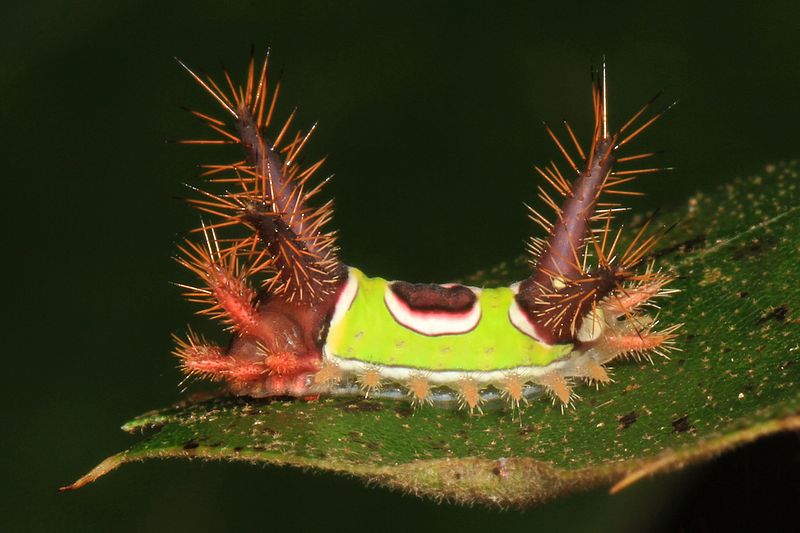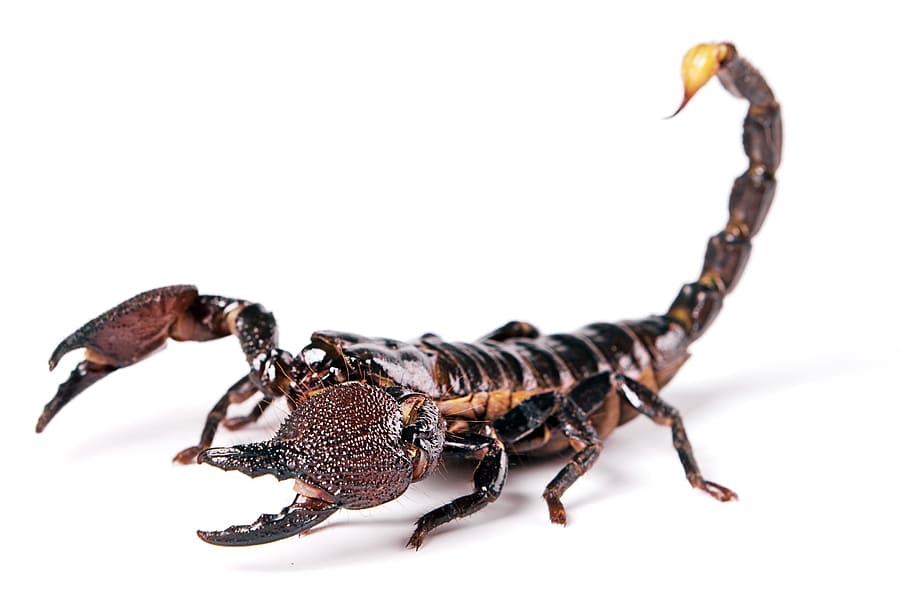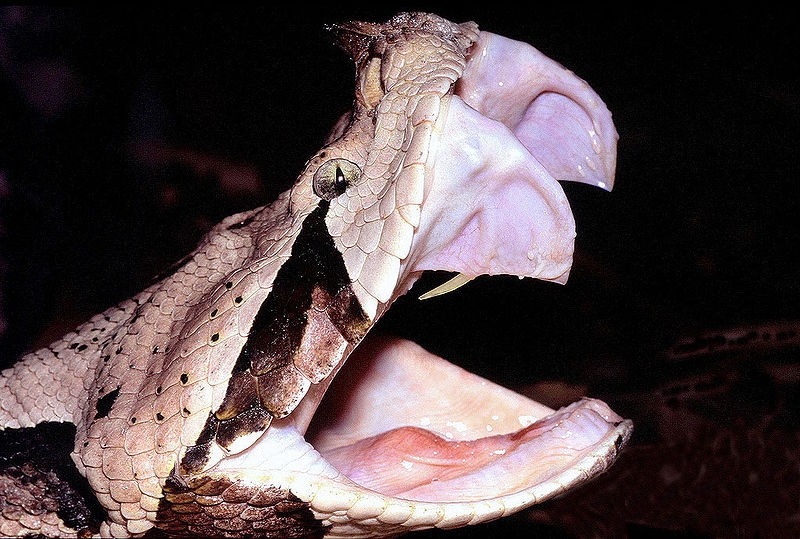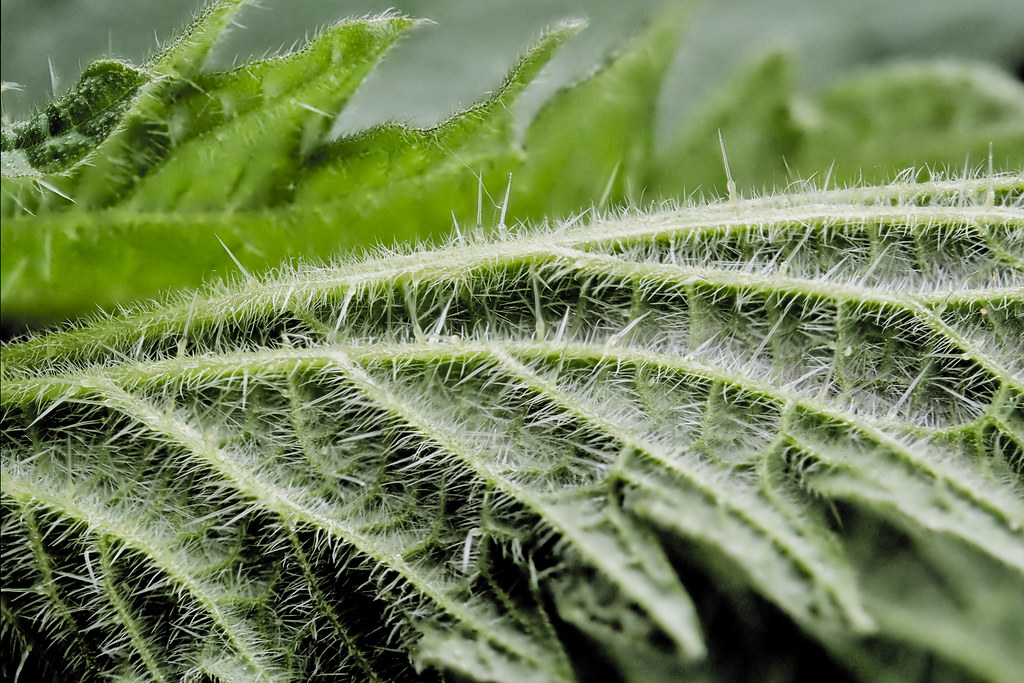.jpg?auto=compress%2Cformat&crop=faces&fit=crop&fm=jpg&h=360&q=70&w=540
)
Wikimedia Commons (CC BY 2.0)
Animals, plants, and even some bacteria use hypodermic needles
Needles are everywhere in nature, evolving independently many times in a variety of organisms
In 1844, Irish physician Francis Rynd performed the first known medical injection using a hollow metal needle that ended in a sharpened point. This instrument, known today as a hypodermic needle, has become one of the most important tools used in medicine and research. Some have even claimed that the hypodermic syringe in particular is responsible for saving more lives and alleviating more suffering than any other piece of medical technology.
It was a brilliant invention, to be sure, but Rynd did not create his hypodermic needle out of whole cloth. Like so many of the devices and tools we use in the modern world, he drew inspiration from nature.
A quick swing through the branches of the tree of life reveals an interesting phenomenon: Everywhere you look, you can find naturally occurring hypodermic needles. They exist in everything from bacteria, to plants, to a whole host of different animal lineages. With relatively few exceptions, the purpose of such needles is essentially the same as Rynd's – to efficiently deliver a substance below some outer layer via puncturing and injection.
Wasps, bees, and ants
Most of the stinging insects belong to the order Hymenoptera, a group which contains the bees, wasps, and ants. Their stingers are highly efficient at delivering toxins and are modified from structures that originally functioned as their egg laying apparatus. Their needles are used both as a defensive mechanism and a prey capture strategy.

While this saddleback caterpillar may look beautiful, you certainly don't want to touch it
Caterpillars
It may come as a surprise, but certain butterfly and moth larvae are capable of delivering quite the sting. Hollow hairs on their backs, called setae, evolved to protect these juicy, slow moving grubs from attacks by would-be predators. Most caterpillar stings are not fatal to humans, but smaller animals ought to beware. The exception to this is a species of giant silkworm moth (Lonomia obliquia), which can kill people.
True bugs
These funny looking insects in the order Hemiptera represent perhaps the only example of organisms whose hypodermic needles contain two channels: one for injecting saliva and another for slurping things back up. Unsurprisingly, given they are often used for feeding, the hollow tube is built from modified mouthparts. Most species are herbivorous and use their needles for sucking nutrients from plants, but there are predatory species as well who use the structure for more sinister purposes.
Centipedes
Centipedes use venomous fangs to kill their prey, but these fangs are not modified mouthparts. These toxin delivery structures actually evolved through modifications to the first pair of centipedes' walking legs.
Spiders
Nearly all spiders possess hollow mouthparts called chelicerae through which they inject their toxins, though less than 30 of the over 43,000 species of spider are known to have killed humans. These needles range in size from very small to very large, just as spider venoms range from very weak to very strong. As in several other organisms, spiders use their hypodermic needles for both prey capture and defense.

A scorpion's stinger is a hollow needle at the end of its tail
Scorpions
Scorpions are arachnids, the same overarching group as spiders. Their stingers are a hollow needle that protrudes from a bulb. Like the stinging insects, this structure is used for both defense and prey capture. However in contrast to the stinging insects, scorpion stingers developed from changes to their final body segment, called the telson, rather than the egg laying apparatus.
Snakes
Though many species of snakes do not possess venomous fangs, about 20 percent do. Vipers in particular are the most well-adapted for delivering venom into the bloodstreams of their prey. Their fangs are modified teeth that form a hollow, hypodermic needle structure designed to deliver death. These needles are incredibly strong and are capable of piercing some of the toughest, thickest hides in nature.
Cnidarians
Members of the phylum Cnidaria (jellyfish, anemones, coral, hydra) are defined by their stinging cells. The stings delivered by these creatures are the result of a specialized needle-like organelle in some of their cells which, upon being disturbed, explode out through the cell wall and embed themselves in the target. It is through these hollow structures that cnidarians deliver toxins which in some cases can be fatal even to humans.

The fangs of a West African Gaboon viper demonstrate why this animal can be so dangerous
Wikimedia Commons (CC BY 2.0)
Cone snails
By modifying one of their "teeth" into a barbed harpoon and attaching it to the end of an extendible proboscis, natural selection has generated one of the more terrifying hypodermic needles around. Cone snails are not to be trifled with; their toxins are some of the most potent in the sea, with several species possessing stings fatal to humans.
Fish
Perhaps surprisingly, there are more venomous fish than other venomous vertebrates combined. Many of these fish deliver their toxins through hollow, needle-like barbs that are actually modified fin bones, though not all. For example, stingray stingers are actually an outgrowth of their spine. Stonefish, lionfish, and scorpionfish are among the most venomous fish in the world and their stings can be fatal if left untreated. In Australia, stonefish antivenom is the second most commonly administered antivenom each year.
Platypus
The platypus is one of the strangest mammals on the planet. They lay eggs, can sense electric fields, and the males possess hollow spurs on their feet capable of delivering a venomous sting. By far the bluntest and crudest of the hypodermic needles on this list, the platypus spur is modified from the heel bone and packs quite a punch.

it's not just animals: plants, like stinging nettles, also have hypodermic needles
Plants
Hypodermic needles aren’t unique to the animal kingdom; some plants have evolved them as well. Stinging nettles, like many plants, possess hair-like structures called trichomes. Natural selection has modified the trichomes on stinging nettles such that they have become hollow and needle-like. It is through these structures that the plant delivers its irritating toxins.
Bacteria
Even single-celled organisms have needles. Certain species of pathogenic bacteria possess a structure known as a type III secretion system which presents itself as an extendible, sensory needle. This allows them to detect and more easily infect eukaryotic cells via direct injection.
In addition to all of these organisms, there is also a single beetle species, Onychocerus albitarsis, with a hypodermic needle appendage. The most unique insect stinger belongs to a rare beetle species native to South America. It is the only known arthropod to have evolved hypodermic needles at the ends of its antennae. Each stinger closely resembles the bulbous stinger found on scorpions, though they evolved on an entirely different body part.
Perhaps the most remarkable thing about the sheer diversity of needle-possessing organisms is they all evolved independently of one another. This process, known as convergent evolution, occurs when unrelated organisms face similar selection pressures.
So, why do hypodermic needles keep evolving?
One reason is that, “injecting a potent toxin to immobilize the prey or to defend oneself from predators would seem to be advantageous compared to simply overpowering it,” says Cole Gilbert, professor of insect behavior and physiology in the Department of Entomology at Cornell University.
Indeed, it would seem that injecting toxin through a hollow needle is an elegant solution to the near-universal problem of how to get lunch while avoiding becoming someone else’s. If an organism can save energy and resources it would otherwise need to spend on building a larger body or stronger muscles and build a simple needle instead, why wouldn't it?
Another reason seems to be that hypodermic needles are relatively easy to make. Like a budget tinkerer, natural selection keeps finding ways to build them from whatever body parts and materials are available. Gilbert explains, “Many of the injection devices are midline structures derived from a bilaterally symmetric precursor [Ed: the needles develop in the central axis of the body's layout, like a human nose]. Thus, most of them evolved by sticking the structures together, either with slidey bits for easier penetration, or, in the case of the scorpion sting, the structure is fused completely.” In other words, it takes far fewer mutations to take two or three existing structures and make them into a hollow tube than to build an entirely new structure from scratch.
Matural hypodermic needles are made of a wide variety of biological materials. For example, arthropod fangs and stingers are made of chitin, the same substance from which their exoskeletons are built. The stonefish, platypus, and snakes all have hollow needles made from bone, whereas a nettle's trichome-derived needles are essentially outgrowths of the plant’s “skin”. The stinging cells in the jellyfish and anemones are made from protein combinations found only in that particular group of animals. The type 3 secretion systems found in bacteria are similar.
Natural hypodermic needles have inspired humans for many centuries and continue to be an important focus of biomechanics and materials research. The extraordinary diversity of organisms that possess them speaks to their utility in aiding with predator defense and prey capture as well as their ability to be created from pre-existing structures and materials. Natural selection produces traits that help organisms survive and reproduce, and often times if a trait works for one organism, it will work for many others as well.
